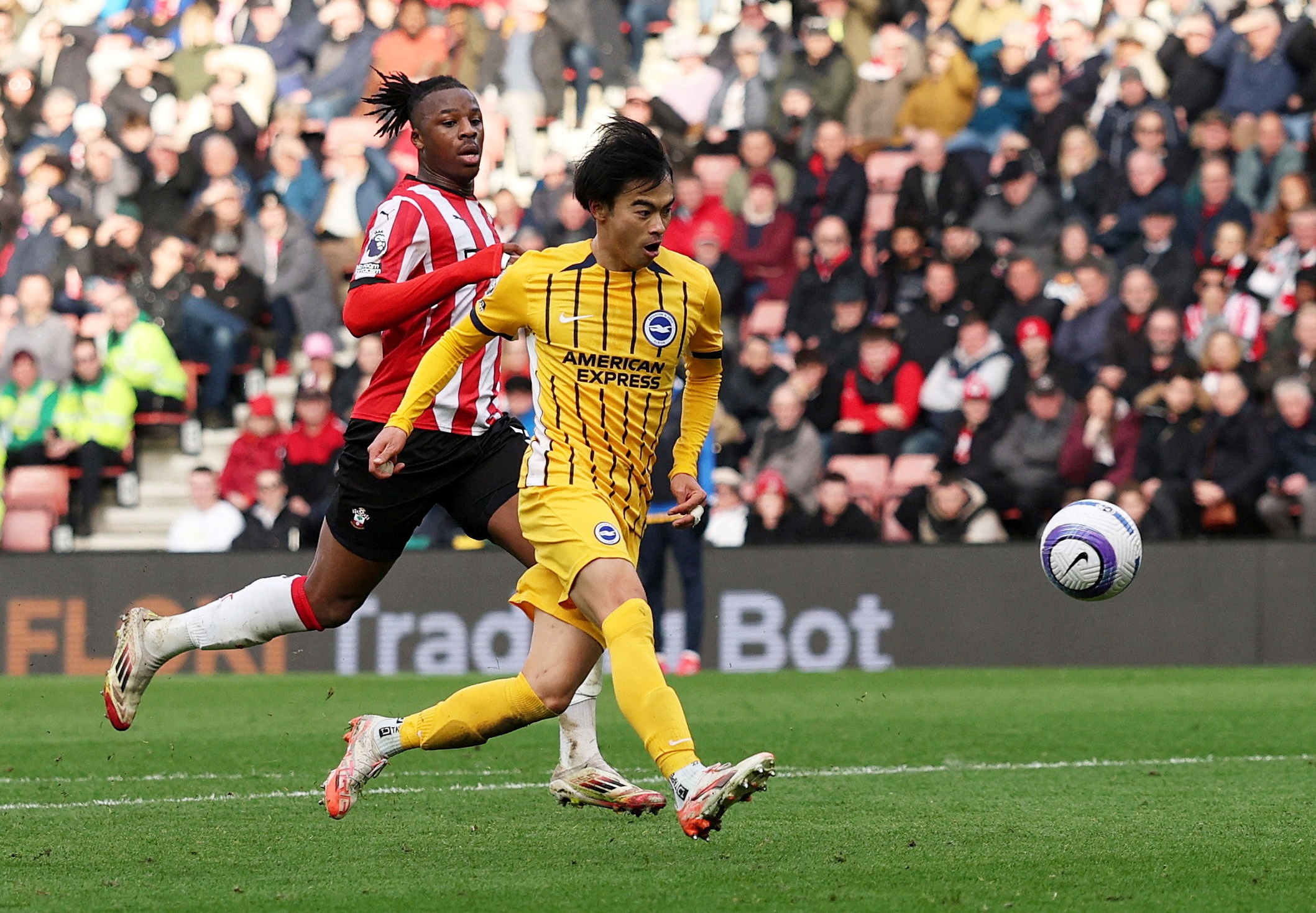 |
Japanese players are appearing in England more and more. |
Behind this trend is a quiet revolution called Project DNA - a modern training strategy that is turning Japan into the new gold mine of European football.
The wave of Japanese players going to England is increasing.
Tottenham have completed the signing of young centre-back Kota Takai from Kawasaki Frontale for a fee of £5m - a seemingly small sum, but a huge milestone. The highest fee ever paid for a player moving from the J.League.
But the story doesn't end there. This is a link in the wave of transfers from Japan to England - a trend that is booming and deliberately designed.
It is no coincidence that a series of Japanese players are shining all over the football fields of the foggy country. From Wataru Endo (Liverpool), Daichi Kamada (Crystal Palace), to Kaoru Mitoma (Brighton) - all are proof of the remarkable progress of Japanese football.
Not stopping there, the Championship and League One have also seen names like Ao Tanaka, Tomoki Iwata and Tatsuhiro Sakamoto consistently assert themselves. Across England, from the highest league to the lowest, people can see the shadow of Japanese players playing everywhere.
And then people started asking: Why Japan? Why did English clubs look to a distant market, which was once considered "domestic" and less competitive? The answer lies in a quiet but ambitious project: Project DNA - initiated in 2016 by the Japan Football Association (JFA) and the J.League organizing committee.
 |
Minamino once played for Liverpool, and currently plays for AS Monaco. |
“DNA” here stands for Developing Natural Ability. While FA also had a similar project, the Japanese went further in their determination to change the traditional training mindset that was too collective and hierarchical. A country that always emphasized order, where the saying “the nail that sticks up will be hammered down” was ingrained in the mindset, now actively supports outstanding individuals.
But the Japanese didn't do it alone. They invited Terry Westley - former director of the West Ham academy - and his partner Adam Raimes to Japan to directly "destroy and rebuild" the youth training system.
The first thing the Japanese did was a nationwide survey: assessing the capabilities of 60 clubs in the three professional divisions. And they quickly discovered the "gold mine" Kawasaki Frontale - the cradle that gave birth to Kaoru Mitoma, Tomoki Iwata and now Kota Takai.
Westley recalled the first time he met Takai: a 1.93m tall, skinny centre-back with exceptional qualities. “He reminded me of Matthew Upson when he was young. He still had a young frame, but his footballing mind was far ahead of his peers,” said Mr. Wetley.
From talents like Takai, a new philosophy was born: develop individualized plans for players aged 16-20, rather than following a formulaic formation. Once again, Japan challenged tradition for the future. Six years later, the results are clear: a generation of Japanese players who are both technical and hard-working, both individual and collective.
Japanese players are everywhere in Europe
The change was quickly noticed by European clubs, with Celtic being the pioneers.
Thanks to coach Ange Postecoglou - who used to lead Yokohama F. Marinos - they recruited a series of Japanese players such as Kyogo Furuhashi, Daizen Maeda, Reo Hatate and Iwata. Even when Ange moved to Tottenham, Celtic still kept the habit of "hunting" in the land of the rising sun, recently they signed Hayato Inamura and are aiming for Shin Yamada.
 |
Mitoma is one of Brighton's notable players in recent times. |
On a broader level, leagues like Austria and Belgium have become ideal transit points. Anderlecht, Red Bull Salzburg and Westerlo have all acquired young Japanese players and turned them into potential commodities for the big markets. Takumi Minamino’s move from Osaka to Salzburg to Liverpool is a clear example.
For Takai, the 20-year-old is more than just potential. He played for the national team and contributed greatly to the campaign to win an early ticket to the 2026 World Cup. In the AFC Champions League, Takai played brilliantly when helping Kawasaki defeat Cristiano Ronaldo's Al Nassr 3-2 - the match that brought his name to light.
Tottenham didn’t have to wait long to act. Technical Director Johan Lange, a shrewd man, had Takai pinned to his list early on. And at £5m, it was a gamble that looked to have gone Spurs’ way.
“A player like that in Europe could be loaned out for millions of pounds a year. It’s crazy that Japanese clubs are still selling him for such a low price,” said Mr Westley.
However, the era of “buying cheap” from Japan may be coming to an end. As young talents gradually make their mark in Europe, the valuation of Japanese players is sure to increase. That is both a challenge and a recognition for Project DNA - a quiet plan that has changed the face of Japanese football, and opened a new “East-West corridor” on the global transfer map.
And then, the British may have to learn an old lesson: sometimes, to find the best, you have to go a long way - all the way to Japan.
Source: https://znews.vn/bi-mat-sau-con-sot-cau-thu-nhat-tai-anh-post1567891.html





![[Infographic] Key tasks of the tourism industry in the last 6 months of 2025](https://vphoto.vietnam.vn/thumb/1200x675/vietnam/resource/IMAGE/2025/7/13/b88287195e194b449e95457db170a92b)
































































































Comment (0)